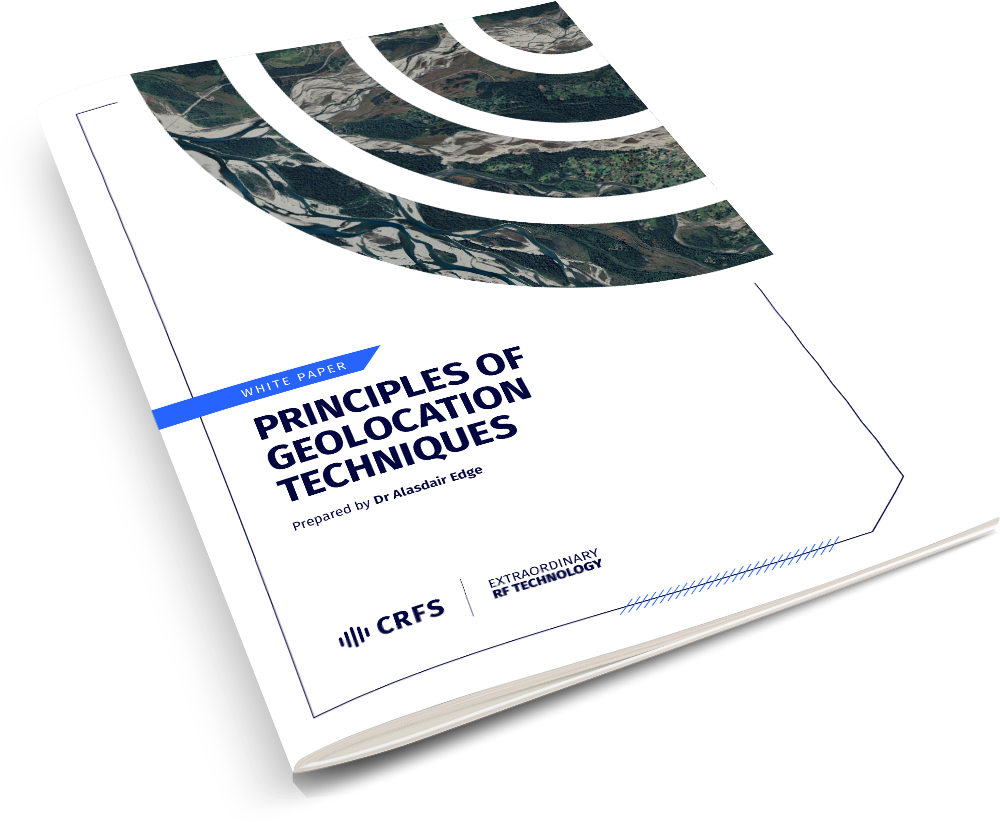Air defense
CRFS passive RF technology detects & geolocates commercial & military airborne emitters with a high degree of discrimination and accuracy
Overview
Despite its versatility, radar emits RF energy, enabling counter targeting by hostile forces. Passive air defense systems can augment radar by identifying and geolocating aircraft transmissions while remaining invisible to electronic detection. RF receivers deployed at ground level, operating 24/7 can be tuned to detect specific signals of interest (ADS-B, TACAN, IFF, tactical data links) emitted by airborne targets.
CRFS’ air defense solution allows users to hunt across a wide and congested spectrum with dedicated signal detectors that discriminate specific signals of interest hundreds of kilometers away from the RF sensor network.
It uses wide-area 3D TDoA to achieve highly accurate geolocations of airborne targets over time. For longer ranges (hundreds of kilometers), the system uses directional antennas to provide a 2D geolocation line of bearing derived from time-of-flight data.
Results can be displayed in any number of ways to represent distance, signal strength, signal type. Users can identify specific transmission types and fade geolocations over time to build a complete intelligence picture. This data can be displayed live or fed into an existing C2 system.
Passive real-time situational awareness
Commercial / military applications
Intelligent detectors
Discriminatory & accurate geolocation
Proven hardware & software
Open architecture for third-party integration
Highly configurable
Air defense applications
Radar augmentation
Passive air defense can complement radar by detecting hostile airborne targets without alerting the enemy, providing covert intelligence and augmenting friendly missile defense systems.
Spoofing detection
Passive air defense systems can detect spoofing by analyzing emission signatures, cross-verifying geolocations, and assessing signal behavior against established baselines and patterns of life.
Detection of military & commercial drones
CRFS RF receivers provide wide frequency capability to detect MALE, COTS, and modified drones operating on frequency bands from 100 MHz to above 10 GHz.
Target acquisition
By leveraging the capabilities of passive detection, militaries can maintain the element of surprise and improve the effectiveness of their defense and offensive strategies.
Border security monitoring
Passive systems can detect and geolocate aircraft flying below radar coverage or attempting to evade detection by using terrain-following techniques.
Talk to an advisor about air defense
Air defense expertise

Principles of geolocation techniques
This white paper describes the underlying principles of geolocation techniques (AoA, TDoA, FDoA, & PoA) and outlines their applications.

Passive geolocation with 3D TDoA

Advanced geolocation capabilities
Learn about advanced geolocation capabilities, AoA, TDoA, PoA, multi geolocation, and much more.

DETECTION & 3D GEOLOCATION OF AERIAL TARGETS OVER WIDE AREAS
How a NATO partner built an air defense platform to increase national security
Read the story

